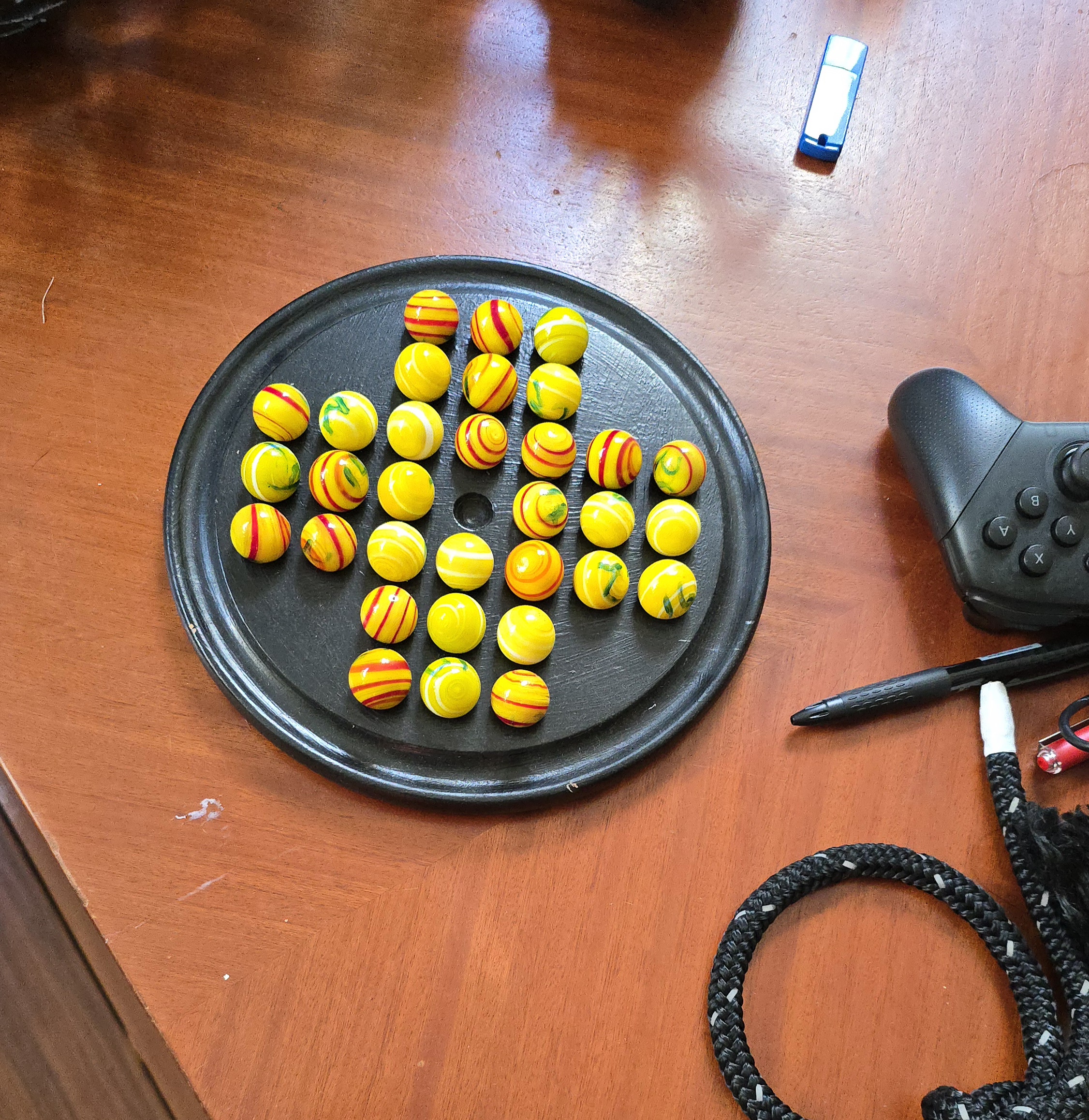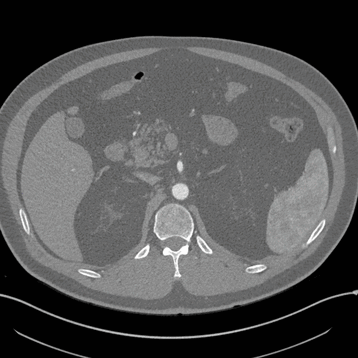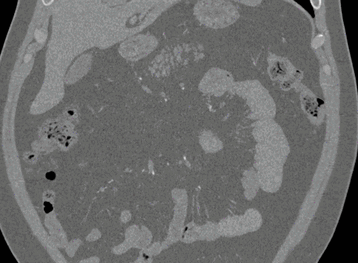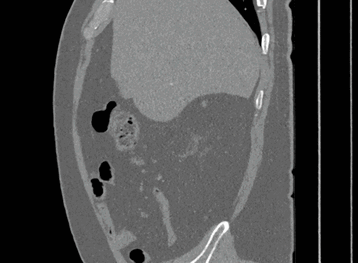Personal Motivations
I grew up as a child with this puzzle in my house. My mother could solve it, along with a couple members on her side of the family.
Mum never knew the algorithm, nor any techniques beyond "My hand just knows"; as a result I spent 4 determined days in my youth working it until I had solved it.

During these 4 days, I learned a heuristic: to consider the L shape `___|` and realise that for every such set, you can perform legal operations until you are left with a single marble. Then, since there are 32 marbles, you can do this 8 times until you have 4 remaining, and finally perform this "L-trick" one last time til a single peg remains in the middle of the board.
We attempted this challenge as part of our Deep Learning and Neural Networks Major Project.



Notebook
Here lies an embedded iframe of my typescript implementation of the Sydney Trains "Make 10" game.
We use a recursive dfs on all parenthesised permutations. See the README file for more details.
rules
There is more to say about this system than the specificationally inferior RPI3.
TODO
This page will be filled soon.
I loved locking up folders as a kid on the Windows 7 computers using batch scripts I didn't understand.
# Welcome to the bytelocker!
This is a small program written in C to help me consolidate by understanding of `FILE` streams, *bitwise operations* and *memory representations* of data.
## What does bytelocker do?
Bytelocker takes in 2 arguments, a file and a password. It then encrypts this file in place with an ECB cipher.
## Why is this useful?
Whilst you can use this binary from the command line to encrypt a standalone file, as is the case with many `C` programs, you will find this integrates nicely within larger workflows. See below.
### My usecase.
I spend my day in vim and vimwiki. And sometimes I need to document slightly sensitive information which I don't feel comfortable leaving in plaintext. As such, I have added a binding to my vimrc calling the bytelocker utility.
The code snippet looks like:
`nnoremap E :silent ! '/Users/aayushbajaj/Google Drive/2. - code/202. - c/202.6 - bytelocker/bytelocker' '%' '$bl_pass'<CR>:set noro<CR>`
here pressing capital E in normal mode will encrypt the file.
- `silent` suppresses output
- `!` is the execution of a shell command, which then runs the bytelocker executable from my google drive
- `%` is a vim macro for the current file
- and the password is retrieved from an environmental variable defined in `.zprofile`.
- the definition looks like `export bl_pass="passwordpassword"`
- **NOTE: the password must be 16 characters!!**
- **NOTE: if you choose to define the password in another file, make sure your viwrc sources the file**
- the line in .vimrc would look something like `so "~/.config/zsh/.zprofile"
### Demo
tl;dr this used to be a standalone repo.
# init
true = 1
false = 0
CONNECT = 4
MIN_BOARD_DIMENSION = 4
MAX_BOARD_WIDTH = 9
MAX_BOARD_HEIGHT = 16
CELL_EMPTY = '.'
CELL_RED = 'R'
CELL_YELLOW = 'Y'
WINNER_NONE = 0
WINNER_RED = 1
WINNER_YELLOW = 2
TURN_RED = 0
TURN_YELLOW = 1
.data
# char board[MAX_BOARD_HEIGHT][MAX_BOARD_WIDTH];
board: .space MAX_BOARD_HEIGHT * MAX_BOARD_WIDTH
board_width: .word 0
board_height: .word 0
enter_board_width_str: .asciiz "Enter board width: "
enter_board_height_str: .asciiz "Enter board height: "
game_over_draw_str: .asciiz "The game is a draw!\n"
game_over_red_str: .asciiz "Game over, Red wins!\n"
game_over_yellow_str: .asciiz "Game over, Yellow wins!\n"
board_too_small_str_1: .asciiz "Board dimension too small (min "
board_too_small_str_2: .asciiz ")\n"
board_too_large_str_1: .asciiz "Board dimension too large (max "
board_too_large_str_2: .asciiz ")\n"
red_str: .asciiz "[RED] "
yellow_str: .asciiz "[YELLOW] "
choose_column_str: .asciiz "Choose a column: "
invalid_column_str: .asciiz "Invalid column\n"
no_space_column_str: .asciiz "No space in that column!\n"
debug: .asciiz "Debug:\n"
.text
main:
# Args: void
# Returns:
# - $v0: int
#
# Frame: [$ra, ...]
# Uses: [...]
# Clobbers: [...]
#
# Locals:
# - [...]
#
# Structure:
# main
# -> [prologue]
# -> body
# -> [epilogue]
main__prologue:
begin # begin a new stack frame
push $ra # | $ra
main__body:
# check valid board dimensions
# print width string
la $a0, enter_board_width_str
li $v0, 4
syscall
# read and store width integer into board_width
li $v0, 5 # read integer
syscall
la $t0, board_width
sw $v0, ($t0)
move $a0, $v0
li $a1, MIN_BOARD_DIMENSION
li $a2, MAX_BOARD_WIDTH
jal assert_board_dimension
# print height string
la $a0, enter_board_height_str
li $v0, 4
syscall
# read and store height integer into board_height
li $v0, 5
syscall
la $t1, board_height
sw $v0, ($t1)
move $a0, $v0
li $a1, MIN_BOARD_DIMENSION
li $a2, MAX_BOARD_HEIGHT
jal assert_board_dimension
# initialise board
jal initialise_board
# print board
jal print_board
# play game
jal play_game
main__epilogue:
pop $ra # | $ra
end # ends the current stack frame
li $v0, 0
jr $ra # return 0;
########################################################################
# .TEXT <assert_board_dimension>
.text
assert_board_dimension:
# Args:
# - $a0: int dimension
# - $a1: int min
# - $a2: int max
# Returns: void
#
# Frame: [...]
# Uses: [...]
# Clobbers: [...]
#
# Locals:
# - [...]
#
# Structure:
# assert_board_dimension
# -> [prologue]
# -> body
# -> [epilogue]
assert_board_dimension__prologue:
begin
push $ra
assert_board_dimension__body:
blt $a0, $a1, assert_board_dimension__small
bgt $a0, $a2, assert_board_dimension__large
assert_board_dimension__epilogue:
pop $ra
end
jr $ra # return;
assert_board_dimension__small:
la $a0, board_too_small_str_1
li $v0, 4
syscall
li $a0, 4
li $v0, 1
syscall
la $a0, board_too_small_str_2
li $v0, 4
syscall
# returns with error code 1
li $a0, 1
li $v0, 17
syscall
assert_board_dimension__large:
la $a0, board_too_large_str_1
li $v0, 4
syscall
li $a0, 16
li $v0, 1
syscall
la $a0, board_too_large_str_2
li $v0, 4
syscall
# returns with error code 1
li $a0, 1
li $v0, 17
syscall
#j assert_board_dimension__epilogue
########################################################################
# .TEXT <initialise_board>
.text
initialise_board:
# Args: void
# Returns: void
#
# Frame: [...]
# Uses: [...]
# Clobbers: [...]
#
# Locals:
# - [...]
#
# Structure:
# initialise_board
# -> [prologue]
# -> body
# -> [epilogue]
initialise_board__prologue:
begin
push $ra
initialise_board__body:
li $s0, 0 # row
la $t0, board
lw $t6, board_width
lw $t7, board_height
initialise_board__row_loop:
bge $s0, $t7, initialise_board__row_end
li $s1, 0 # col
initialise_board__col_loop:
bge $s1, $t6, initialise_board__col_end
# adding row offset
mul $t1, $s0, MAX_BOARD_WIDTH
# adding col offset
add $t3, $t1, $s1
li $t4, CELL_EMPTY
sb $t4, board($t3)
addi $s1, $s1, 1
b initialise_board__col_loop
initialise_board__col_end:
addi $s0, $s0, 1
b initialise_board__row_loop
initialise_board__row_end:
# clearing variables
li $s0, 0
li $s1, 0
initialise_board__epilogue:
pop $ra
end
jr $ra # return;
########################################################################
# .TEXT <play_game>
.text
play_game:
# Args: void
# Returns: void
#
# Frame: [...]
# Uses: [...]
# Clobbers: [...]
#
# Locals:
# - [...]
#
# Structure:
# play_game
# -> [prologue]
# -> body
# -> [epilogue]
play_game__prologue:
begin
push $ra
play_game__body:
li $s4, TURN_RED
li $s3, WINNER_NONE
play_game__loop:
bne $s3, WINNER_NONE, play_game__check
jal is_board_full
beq $v0, true, play_game__check
move $a0, $s4
jal play_turn
move $s4, $v0
jal print_board
jal check_winner
move $s3, $v0
b play_game__loop
play_game__check:
li $t0, WINNER_NONE
li $t1, WINNER_RED
li $t2, WINNER_YELLOW
beq $s3, $t0, play_game__draw
beq $s3, $t1, play_game__red
beq $s3, $t2, play_game__yellow
play_game__draw:
la $a0, game_over_draw_str
li $v0, 4
syscall
j play_game__epilogue
play_game__red:
la $a0, game_over_red_str
li $v0, 4
syscall
j play_game__epilogue
play_game__yellow:
la $a0, game_over_yellow_str
li $v0, 4
syscall
j play_game__epilogue
play_game__epilogue:
pop $ra
end
jr $ra # return;
########################################################################
# .TEXT <play_turn>
.text
play_turn:
# Args:
# - $a0: int whose_turn
# Returns: void
#
# Frame: [...]
# Uses: [...]
# Clobbers: [...]
#
# Locals:
# - [...]
#
# Structure:
# play_turn
# -> [prologue]
# -> body
# -> [epilogue]
play_turn__prologue:
begin
push $ra
lb $t0, board_width
play_turn__prints:
move $s0, $a0
beq $s0, TURN_RED, play_turn__print_red
beq $s0, TURN_YELLOW, play_turn__print_yellow
play_turn__print_red:
la $a0, red_str
li $v0, 4
syscall
j play_turn__body
play_turn__print_yellow:
la $a0, yellow_str
li $v0, 4
syscall
j play_turn__body
play_turn__body:
la $a0, choose_column_str
li $v0, 4
syscall
li $v0, 5
syscall
move $s1, $v0
sub $s1, $s1, 1 # user input 1-indexed (column)
blt $s1, $zero, play_turn__invalid
bge $s1, $t0, play_turn__invalid
lb $s2, board_height
sub $s2, $s2, 1 # row
play_turn__loop:
blt $s2, 0, play_turn__body_cont
li $t7, MAX_BOARD_WIDTH
mul $t0, $s2, $t7
add $t0, $t0, $s1
lb $t2, board($t0)
beq $t2, 46, play_turn__body_cont
sub $s2, $s2, 1
blt $s2, 0, play_turn__full
b play_turn__loop
play_turn__body_cont:
beq $s0, TURN_RED, play_turn__set_red
beq $s0, TURN_YELLOW, play_turn__set_yellow
play_turn__set_red:
mul $t0, $s2, MAX_BOARD_WIDTH
add $t0, $s1
li $t1, CELL_RED
sb $t1, board($t0)
li $s0, TURN_YELLOW
j play_turn__epilogue
play_turn__set_yellow:
mul $t0, $s2, MAX_BOARD_WIDTH
add $t0, $s1
li $t1, CELL_YELLOW
sb $t1, board($t0)
li $s0, TURN_RED
j play_turn__epilogue
play_turn__invalid:
la $a0, invalid_column_str
li $v0, 4
syscall
j play_turn__epilogue
play_turn__full:
la $a0, no_space_column_str
li $v0, 4
syscall
j play_turn__epilogue
play_turn__epilogue:
la $v0, ($s0)
pop $ra
end
jr $ra # return;
########################################################################
# .TEXT <check_winner>
.text
check_winner:
# Args: void
# Returns:
# - $v0: int
#
# Frame: [...]
# Uses: [...]
# Clobbers: [...]
#
# Locals:
# - [...]
#
# Structure:
# check_winner
# -> [prologue]
# -> body
# -> [epilogue]
check_winner__prologue:
begin
push $ra
check_winner__body:
li $s0, 0 # row
lw $t6, board_width
lw $t7, board_height
check_winner__row_loop:
bge $s0, $t7, check_winner__row_end
li $s1, 0 # col
check_winner__col_loop:
bge $s1, $t6, check_winner__col_end
# computing row offset
mul $t2, $s0, MAX_BOARD_WIDTH
# computing col offset
add $t2, $s1
## check vertical line
move $a0, $s0
move $a1, $s1
li $a2, 1
li $a3, 0
jal check_line
bne $v0, WINNER_NONE, check_winner__epilogue
# check horizontal line
move $a0, $s0
move $a1, $s1
li $a2, 0
li $a3, 1
jal check_line
bne $v0, WINNER_NONE, check_winner__epilogue
# check gradient = -1 line
move $a0, $s0
move $a1, $s1
li $a2, 1
li $a3, 1
jal check_line
bne $v0, WINNER_NONE, check_winner__epilogue
# check gradient = 1 line
move $a0, $s0
move $a1, $s1
li $a2, 1
li $a3, -1
jal check_line
bne $v0, WINNER_NONE, check_winner__epilogue
addiu $s1, 1
j check_winner__col_loop
check_winner__col_end:
addiu $s0, 1
j check_winner__row_loop
check_winner__row_end:
check_winner__epilogue:
pop $ra
end
jr $ra # return;
########################################################################
# .TEXT <check_line>
.text
check_line:
# Args:
# - $a0: int start_row
# - $a1: int start_col
# - $a2: int offset_row
# - $a3: int offset_col
# Returns:
# - $v0: int
#
# Frame: [...]
# Uses: [...]
# Clobbers: [...]
#
# Locals:
# - [...]
#
# Structure:
# check_line
# -> [prologue]
# -> body
# -> [epilogue]
check_line__prologue:
begin
push $ra
lw $s2, board_height
lw $s5, board_width
# calculating offset
mul $t0, $a0, MAX_BOARD_WIDTH
add $t0, $t0, $a1 # first_cell
lb $t1, board($t0)
beq $t1, CELL_EMPTY, check_line__winner_none
add $t2, $a0, $a2 # row
add $t3, $a1, $a3 # col
# how many connects required
li $t5, CONNECT
sub $t5, $t5, 1
# i for loop
li $t4, 0
# clearing t7 register
li $t8, 0
check_line__body:
bge $t4, $t5, check_line__body_cont
blt $t2, $zero, check_line__winner_none
blt $t3, $zero, check_line__winner_none
bge $t2, $s2, check_line__winner_none
bge $t3, $s5, check_line__winner_none
mul $t8, $t2, MAX_BOARD_WIDTH
add $t8, $t8, $t3 # board[row][col]
lb $t9, board($t8)
bne $t1, $t9, check_line__winner_none
add $t2, $t2, $a2
add $t3, $t3, $a3
addiu $t4, 1
b check_line__body
check_line__winner_none:
li $v0, WINNER_NONE
j check_line__epilogue
check_line__winner_red:
li $v0, WINNER_RED
j check_line__epilogue
check_line__winner_yellow:
li $v0, WINNER_YELLOW
j check_line__epilogue
check_line__body_cont:
beq $t1, CELL_RED, check_line__winner_red
beq $t1, CELL_YELLOW, check_line__winner_yellow
check_line__epilogue:
pop $ra
end
jr $ra # return;
########################################################################
# .TEXT <is_board_full>
# YOU DO NOT NEED TO CHANGE THE IS_BOARD_FULL FUNCTION
.text
is_board_full:
# Args: void
# Returns:
# - $v0: bool
#
# Frame: []
# Uses: [$v0, $t0, $t1, $t2, $t3]
# Clobbers: [$v0, $t0, $t1, $t2, $t3]
#
# Locals:
# - $t0: int row
# - $t1: int col
#
# Structure:
# is_board_full
# -> [prologue]
# -> body
# -> loop_row_init
# -> loop_row_cond
# -> loop_row_body
# -> loop_col_init
# -> loop_col_cond
# -> loop_col_body
# -> loop_col_step
# -> loop_col_end
# -> loop_row_step
# -> loop_row_end
# -> [epilogue]
is_board_full__prologue:
is_board_full__body:
li $v0, true
is_board_full__loop_row_init:
li $t0, 0 # int row = 0;
is_board_full__loop_row_cond:
lw $t2, board_height
bge $t0, $t2, is_board_full__epilogue # if (row >= board_height) goto is_board_full__loop_row_end;
is_board_full__loop_row_body:
is_board_full__loop_col_init:
li $t1, 0 # int col = 0;
is_board_full__loop_col_cond:
lw $t2, board_width
bge $t1, $t2, is_board_full__loop_col_end # if (col >= board_width) goto is_board_full__loop_col_end;
is_board_full__loop_col_body:
mul $t2, $t0, MAX_BOARD_WIDTH # row * MAX_BOARD_WIDTH
add $t2, $t2, $t1 # row * MAX_BOARD_WIDTH + col
lb $t3, board($t2) # board[row][col];
bne $t3, CELL_EMPTY, is_board_full__loop_col_step # if (cell != CELL_EMPTY) goto is_board_full__loop_col_step;
li $v0, false
b is_board_full__epilogue # return false;
is_board_full__loop_col_step:
addi $t1, $t1, 1 # col++;
b is_board_full__loop_col_cond # goto is_board_full__loop_col_cond;
is_board_full__loop_col_end:
is_board_full__loop_row_step:
addi $t0, $t0, 1 # row++;
b is_board_full__loop_row_cond # goto is_board_full__loop_row_cond;
is_board_full__loop_row_end:
is_board_full__epilogue:
jr $ra # return;
########################################################################
# .TEXT <print_board>
# YOU DO NOT NEED TO CHANGE THE PRINT_BOARD FUNCTION
.text
print_board:
# Args: void
# Returns: void
#
# Frame: []
# Uses: [$v0, $a0, $t0, $t1, $t2]
# Clobbers: [$v0, $a0, $t0, $t1, $t2]
#
# Locals:
# - `int col` in $t0
# - `int row` in $t0
# - `int col` in $t1
#
# Structure:
# print_board
# -> [prologue]
# -> body
# -> for_header_init
# -> for_header_cond
# -> for_header_body
# -> for_header_step
# -> for_header_post
# -> for_row_init
# -> for_row_cond
# -> for_row_body
# -> for_col_init
# -> for_col_cond
# -> for_col_body
# -> for_col_step
# -> for_col_post
# -> for_row_step
# -> for_row_post
# -> [epilogue]
print_board__prologue:
print_board__body:
li $v0, 11 # syscall 11: print_int
la $a0, '\n'
syscall # printf("\n");
print_board__for_header_init:
li $t0, 0 # int col = 0;
print_board__for_header_cond:
lw $t1, board_width
blt $t0, $t1, print_board__for_header_body # col < board_width;
b print_board__for_header_post
print_board__for_header_body:
li $v0, 1 # syscall 1: print_int
addiu $a0, $t0, 1 # col + 1
syscall # printf("%d", col + 1);
li $v0, 11 # syscall 11: print_character
li $a0, ' '
syscall # printf(" ");
print_board__for_header_step:
addiu $t0, 1 # col++
b print_board__for_header_cond
print_board__for_header_post:
li $v0, 11
la $a0, '\n'
syscall # printf("\n");
print_board__for_row_init:
li $t0, 0 # int row = 0;
print_board__for_row_cond:
lw $t1, board_height
blt $t0, $t1, print_board__for_row_body # row < board_height
b print_board__for_row_post
print_board__for_row_body:
print_board__for_col_init:
li $t1, 0 # int col = 0;
print_board__for_col_cond:
lw $t2, board_width
blt $t1, $t2, print_board__for_col_body # col < board_width
b print_board__for_col_post
print_board__for_col_body:
mul $t2, $t0, MAX_BOARD_WIDTH
add $t2, $t1
## debug
#la $a0, ($t2)
#li $v0, 1
#syscall
## debug
lb $a0, board($t2) # board[row][col]
li $v0, 11 # syscall 11: print_character
syscall # printf("%c", board[row][col]);
li $v0, 11 # syscall 11: print_character
li $a0, ' '
syscall # printf(" ");
print_board__for_col_step:
addiu $t1, 1 # col++;
b print_board__for_col_cond
print_board__for_col_post:
li $v0, 11 # syscall 11: print_character
li $a0, '\n'
syscall # printf("\n");
print_board__for_row_step:
addiu $t0, 1
b print_board__for_row_cond
print_board__for_row_post:
print_board__epilogue:
jr $ra # return;This page is to journal my construction of the arcade.
Technology stack
Frontend:
- React with Typescript
- Tailwind CSS
- Zustand (simple state management)
- Framer Motion (smooth animations)
Backend:
- Node.js with express
- Rest API
Steps
mkdir -p backend/src/controllers backend/src/models backend/src/routes
mkdir -p frontend/src/components/games frontend/src/pages frontend/public- create
package.jsonfor both backend and frontend - create main backend file, game routes, game controller
pm2configuration for containerisation- create
tailwindconfig - create
App.jsin frontend
Resources to work through
I am using this project as an excuse to learn GO.
Each heading below is a tool I have produced, the Go code is tangled into a repository called 100 Days of Go and repurposed at tools.abaj.ai — which serves these convenience mathematical and programmatic tools in a nice frontend.
The Table of Contents is your friend.
Primality Checker
Nth Fibonacci Number
GCD
LCM
Base Changer
The repository is the authority on this project.
And the site itself is terrific fun to play around with.
I constructed the entire affair in approximately 72 hours with no syntactical knowledge of typescript using Cursor and Claude AI's!
Non-descriptive frisbee stats
A computer vision model that takes in streamed games and outputs a player statistic that factors in non-descriptive events — i.e. giving the correct call at the correct time, or poaching in the lane to force a bad throw.
I expect this to be trained using a transformer and written in Python. It is inspired by Andrew Wood's analytical Ultimate dream.
OCR
This was one of the first times I fell in love with Machine Learning, without knowing that the magic came from Machine Learning methods.
I simply had a `pdf` file with handwritten or scanned text, and desperately wanted to find something within the document without having to do it manually.
I google online for an OCR; upload my file; download it back again, and hey presto — such magical, accurate results!